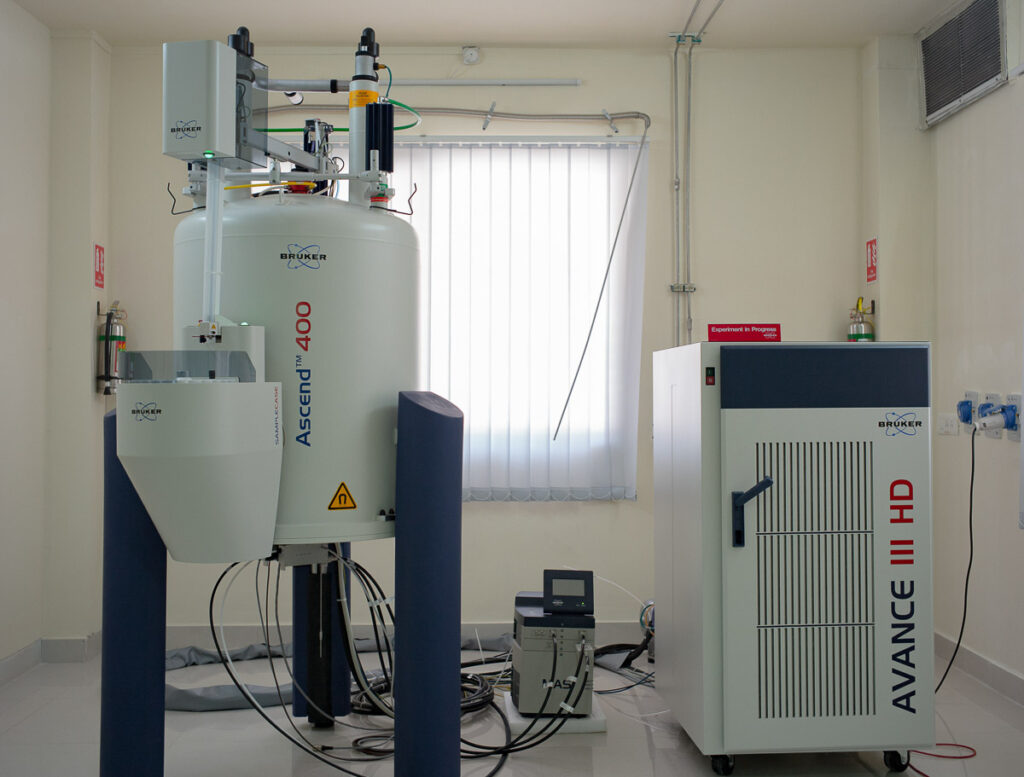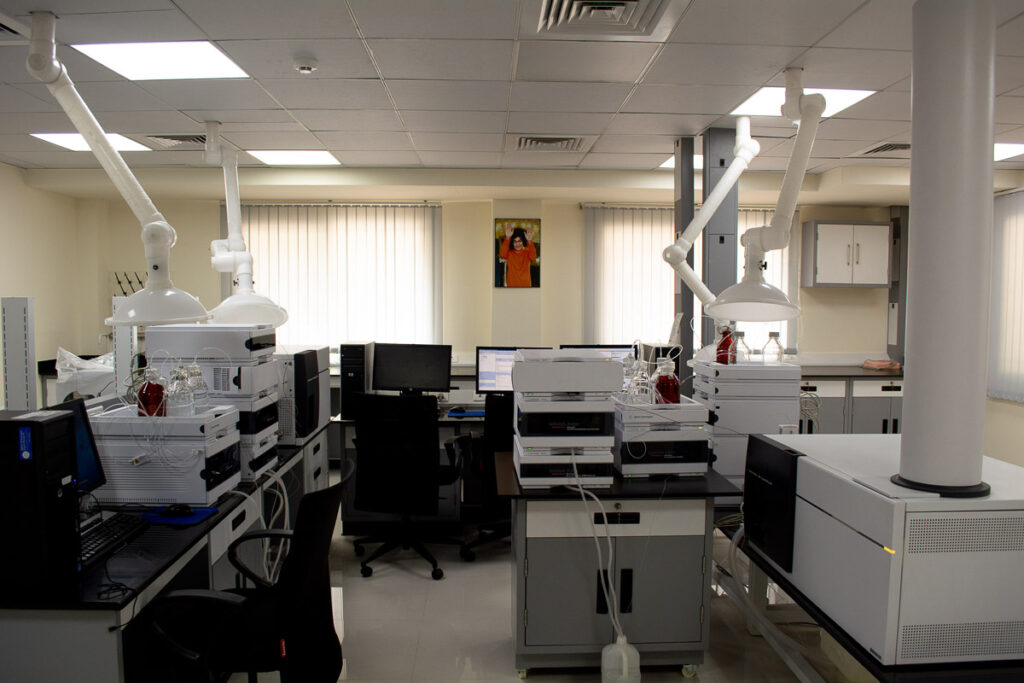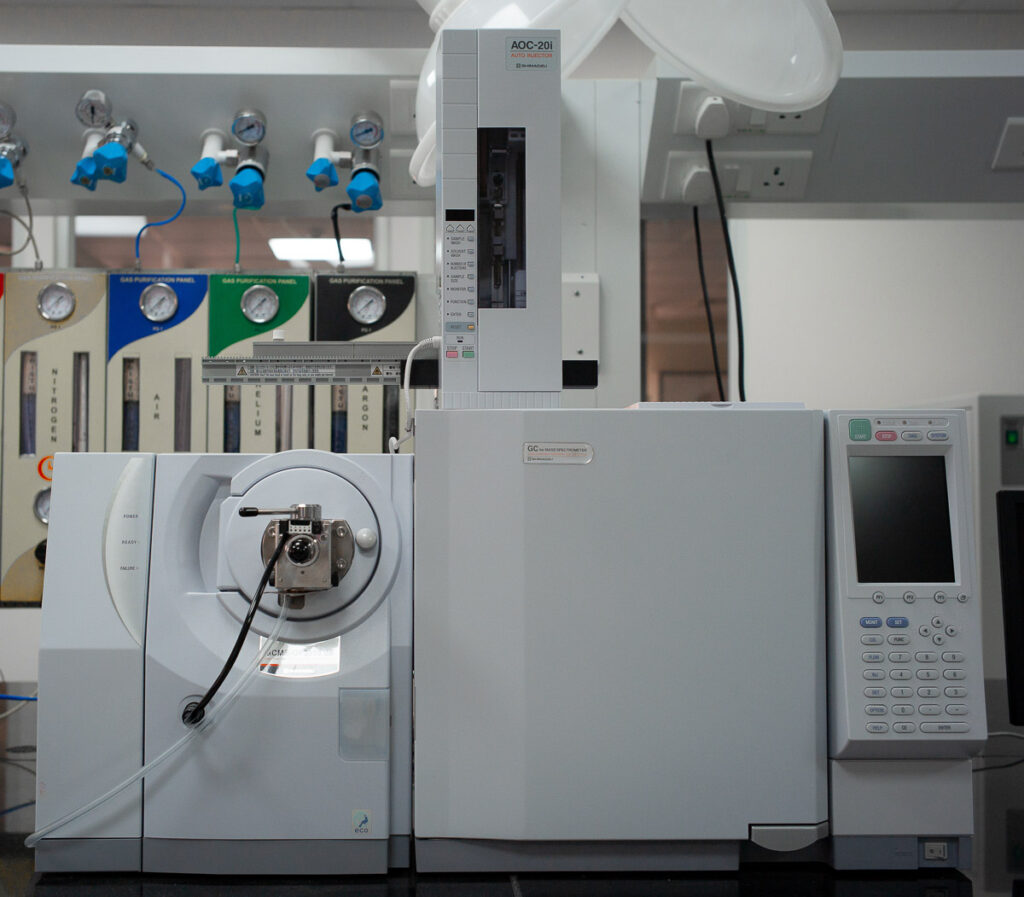Nuclear Magnetic Resonance (NMR) Spectrometer
(Bruker Ascend 400 MHz)
(Bruker Ascend 400 MHz)

This facility could be used to probe materials and biological processes at the molecular and nanoscale to obtain information on the 3D structures and dynamics of molecules. This instrument is used by chemists, materials scientists, biologists and clinicians. NMR spectrometry is used to study everything from DNA to disease–causing proteins. Information obtained from NMR studies aids in the development of new drugs. NMR Spectroscopy is used to study molecular conformation in solution, quantitative analysis of mixtures, determining the content and purity of a sample.
(HR-MS [Q-TOF] and Triple quad)

Molecules can be identified based on their accurate mass. These equipment can be used to assess and quantify metabolites and proteins in patient samples, animal models, and cell culture (including plants & fungi). These facilities can also be used to identify and quantify transient changes which influence protein function, so as to elucidate the molecular mechanisms/ pathways at work.
(GC/MS – QP2010 SE)

GC/MS is an instrumental technique, comprising a Gas Chromatograph (GC) coupled to a Mass Spectrometer (MS), by which complex mixtures of chemicals may be separated, identified and quantified. This makes it ideal for the analysis of hundreds of relatively low molecular weight compounds found in environmental materials. For compound to be analysed by GC/MS it must be sufficiently volatile and thermally stable.
In addition, functionalised compounds may require chemical modification (derivatization), prior to analysis, to eliminate undesirable adsorption effects that would otherwise affect the quality of the data obtained. Samples (such as soils, sediments, tissues etc.) to be analysed need to be solvent extracted and the extract is subjected to various ‘wet chemical’ techniques prior to GC/MS analysis.
It assists to identify and quantify various molecules that are volatile in nature. This instrument can be used in studies relating to fatty acids and pesticides present in Biological, Environmental and Food matrices.
It is a widely used technique in the analysis of perfumes and essential oils.


